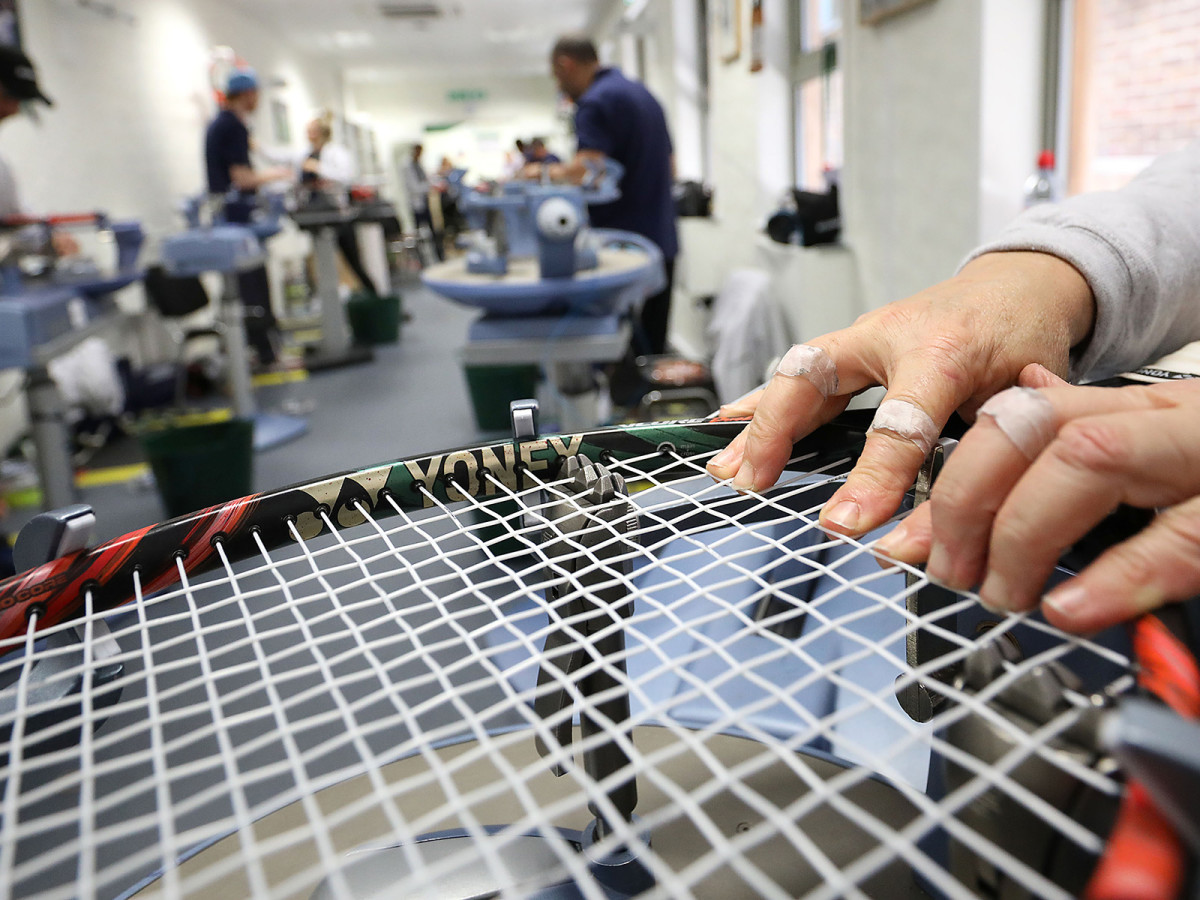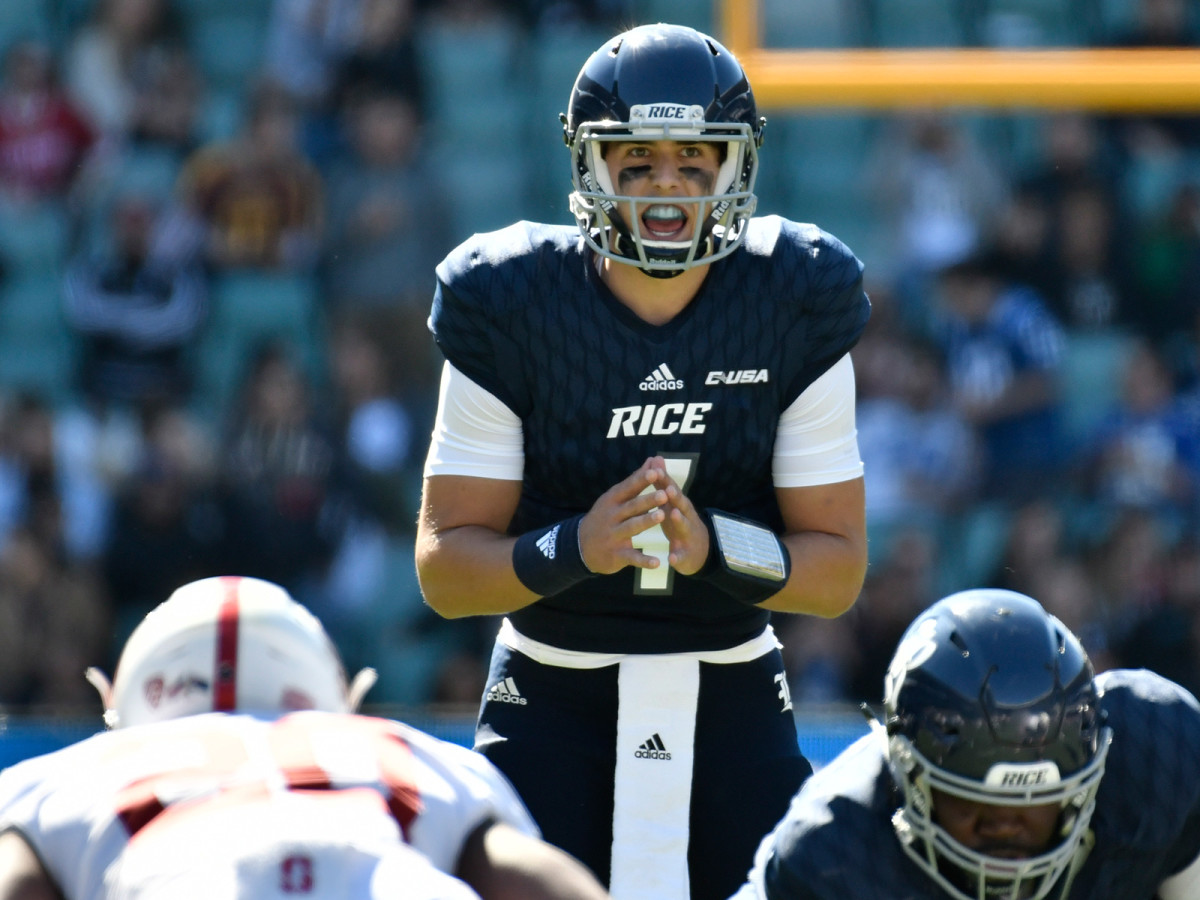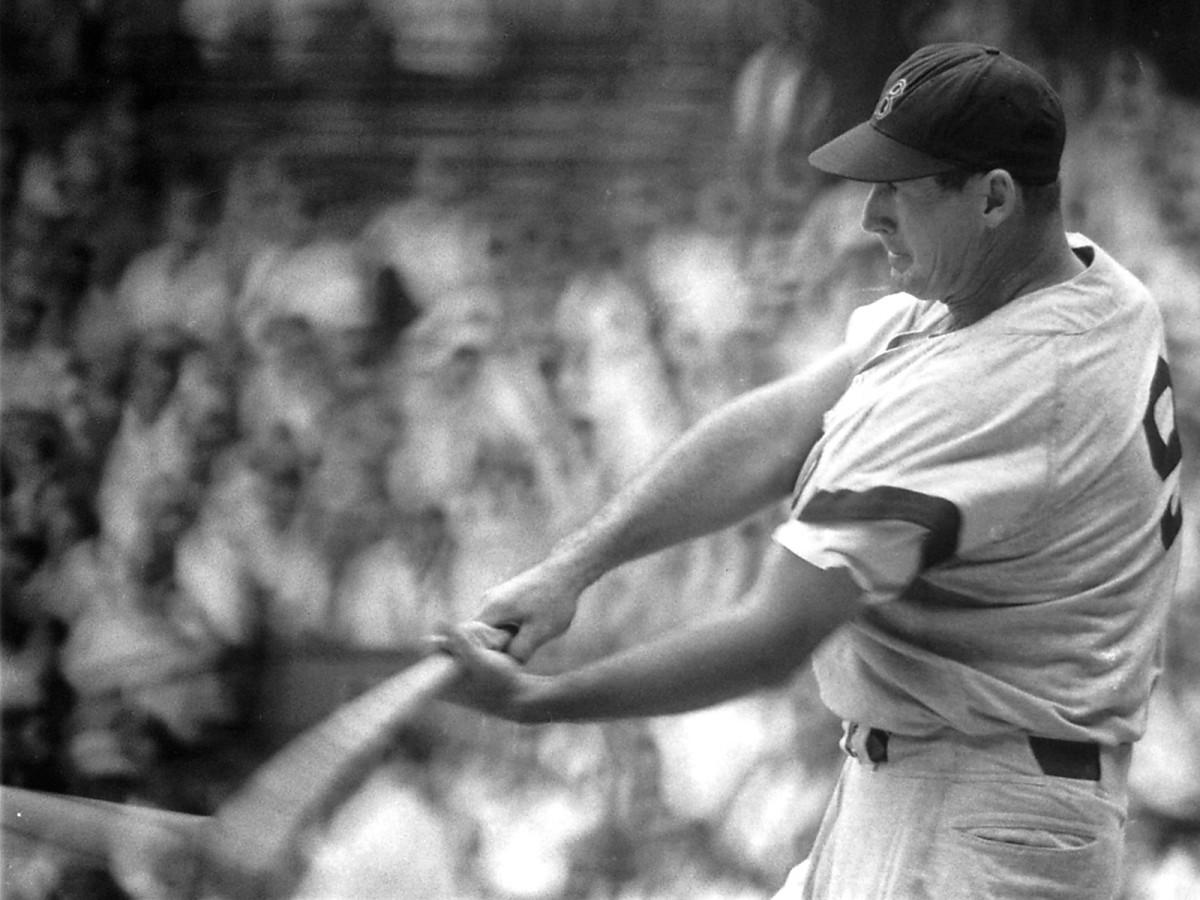Inside the World of U.S. Open Racket Stringers; College Football Week Zero Viewer's Guide; More

By Connor Grossman
Within Arthur Ashe Stadium at the U.S. Open, where the marquee players compete during the season’s final Grand Slam, another world-class group of tennis fanatics work tirelessly at their craft.
They’re far removed from the fans, media members and anyone else who might disturb them. They’re at the pinnacle of their industry and without them, there wouldn’t be any U.S. Open action at all.
We’re talking about the racket stringers.
Eighteen of the world’s top stringers head to the USTA Billie Jean King National Tennis Center in New York each August, working ridiculously long hours—how does 7 a.m. to midnight sound?—operating on strict deadlines and garnering little-to-no acknowledgement for their work. In the most twisted sense of the word, this is their reward for surviving a rigorous, potentially years-long vetting process.
Who makes the cut? That’s at the discretion of Ron Rocchi of Wilson Sporting Goods, who’s in charge of assembling the elite group of stringers.
“It’s a wonderful job,” Rocchi said with a laugh, running through his faux sales pitch to stringers. “If you do it perfectly, that’s expected. If you make a mistake, that’s amplified to the world.”
There’s no shortage of interest in stringing at the U.S. Open, of course, but most applicants aren’t able to cope with the pressure. Half the candidates who engage with Rocchi’s training program don’t complete it, and even some who do eventually decide that the apex of their industry is not where they want to be.
One stringer, Rocchi recalled, went through all the laborious motions to make it as a stringer in the U.S. Open. On the third day of competition he simply packed up his tools and walked out. The intensity can be crushing.
“If [Rafael] Nadal walks up to my desk to pick up his racket and … [it’s] not ready,” Rocchi said, “it’s not like, ‘Ah, we’ll get it to you later.’
“…That is worst-case scenario and we are never going to let that happen. The pressure is real because of who we’re servicing.”
The stress becomes abundantly clear to candidates over the course of numerous tournaments and trainings they’re required to attend. Rocchi leans on his network throughout the stringing industry and recruits internationally to reel in talent he thinks can survive the environment.

It’s a long journey before stringers get to demonstrate their ability on players’ rackets. The trek starts at a small tournament like the Miami Open, winds back to the candidate’s home where they’ll hone the requisite technique and if their progress is satisfactory, they’ll attend a second, third and fourth tournament.
The gradual buildup of responsibility and pressure is calculated, reaching an inflection point during the second attended tournament. That’s when Rocchi introduces the stress test: 12-15 rackets strung in an eight-hour window, all with different completion times and “curveballs” thrown in.
Almost done with a racket? Oops. Looks like a string broke. Start over.
“We really want to see if you can deal with [the pressure] or if you’re going to end up on the floor in a fetal position,” Rocchi said.
Rackets should be strung in 15-20 minutes, according to Rocchi.The test lasts eight hours, but it’s done at the end of a training day. Like taking the SAT twice in one sitting, it’s no one’s idea of fun.
Forging a path to the U.S. Open becomes a bit easier if the stringer comes out of the stress test unscathed. By the fourth tournament, they’ll start stringing some of the main draw players and essentially graduate training—all in a tidy one to three years.
The reward at the end might not seem like much of one, but don’t tell that to the stringers in Arthur Ashe Stadium. They hold serious cache in the subculture of racket stringing, serving the world’s biggest stars.
They wouldn’t have it any other way.
“It’s not glamorous. We don’t fly private jets. There’s no having lunch with players,” Rocchi said. “This is a back-of-the-house, critical operation that’s gotta get done right for the livelihood of these athletes.”
GO FIGURE: U.S. OPEN RACKET STRINGING BY THE NUMBERS
• More than 5,000rackets will be strung at the U.S. Open—sometimes more than 500 on a single day of the multi-week tournament.
• Ron Rocchi's stringing team features 18 stringers this year. Three members remain from his original team set up in 2005. Two members are new this year.
• Players come from all around the world to the U.S. Open. So do the stringers. Rocchi estimates his team combines to speak 10-12 different languages.
RECOMMENDED READING
•After tearing his ACL at Clemson, Deshaun Watson twice reached the national championship. The Texans’ QB is ready for history to repeat itself. (By Greg Bishop)
• The A's are the most refreshing story of the season. The question now is how far baseball's least likely contender can go. (By Emma Baccellieri)
• For Sean McVay, football is a complete obsession, but it’s an obsession that helped him become the youngest head coach in modern NFL history. (By Greg Bishop)
• J.J. Watt and girlfriend Kealia Ohai, a soccer star, recovered from the most devastating injuries of their careers this year. How two sports stars leaned on each other to get back onto the field this summer. (By Jenny Vrentas)
• You want NFL predictions, we got 'em. From team-by-team records to the Super Bowl score, this how the 2018 NFL season will play out. (By Andy Benoit)
• As for college football, our experts documented their predictions for this season over here. You'll see plenty of Alabama and Clemson. (By the SI Staff)
WHY YOU SHOULD WATCH COLLEGE FOOTBALL'S WEEK ZERO

By Eric Single
Editor's note: Find a lengthier preview of this weekend's action on SI.com's College Football page.
You won’t miss the most important moments of the 2018 college football season if you choose to spend this Saturday away from a screen. But you will miss some college football. Below, we make the case for watching each of the four games during Week Zero.
Duquesne at UMass (5:30 p.m. ET, UMassAthletics.com)
Watch it because: It’s the first one. The Minutemen scared a lot of more talented teams in 2017, including Temple, Tennessee, Ohio and Mississippi State. The Dukes have 13 former FBS players on their roster.
Prairie View A&M at Rice (7 p.m. ET, ESPN+)
Watch it because: First-year head coach Mike Bloomgren was hired away from Stanford’s offensive staff to turn Rice into Conference USA’s own enclave of “Intellectual Brutality.” Prairie View’s marching band is always worth the price of admission/subscription streaming services.
Hawaii at Colorado State (7:30 p.m. ET, CBSSN)
Watch it because: The Rams turned in the most impressive non-Stanford performance of the inaugural Week Zero last year. Colorado State can look forward to some continuity now that head coach Mike Bobo has returned to the team after a nearly two-week hospitalization for numbness in his feet.
Wyoming at New Mexico State (10 p.m. ET, ESPN2)
Watch it because: These two teams might end up back on your screens again this season. Wyoming hosts Washington State and Boise State and travels to Missouri all in September, giving us an early look at the Cowboys post-Josh Allen. Fresh off its first bowl game in 57 years, New Mexico State plunges into life as an independent and gets a rare ESPN2 showcase in Las Cruces that should give diehards a taste of the late-night craziness in store over the next three months of Saturdays.
VAULT PHOTO OF THE WEEK: A CENTURY OF TED WILLIAMS

The late, great Ted Williams was born 100 years ago this Thursday, Aug. 30. The Kid passed away in June 2002 and will forever be cherished as one of the best to ever play the game. Perhaps the crown jewel of his Hall of Fame résumé, Williams is the last player to hit .400 in a season. No one has cleared the threshold since he batted .406 in 1941. Today's focus on maximizing launch angle (increasing both home runs and strikeout totals) doesn't inspire confidence that the mark will apparoached anytime soon. He had one of the sweetest swings you'll ever see.
For a fun read, SI went fishing with Williams in 1967. Photograph by Hy Peskin.
BEST OF THE REST
Editor's note: Below are some of our favorite stories of the week not published by SI. This week's list is curated by Connor Grossman.
• Dan Wetzel of Yahoo! Sports dives into Ohio State's cover-up culture, which enabled Urban Meyer to keep his job.
• There are 20 rules when it comes to creating a ballplayer's nickname. ESPN's Sam Miller curated an entertaining list.
• Meet the man in charge of keeping the history of Michigan football. Enlightening piece from Cody Stavenhagen of The Athletic.
• Plenty has been written about 49ers QB Jimmy Garoppolo, but The Ringer's Robert Mays has an interesting story on why San Francisco offered its quarterback a franchise-altering contract so quickly.
• This story didn't come out in the last week, but John Branch penned a brilliant piece for the New York Times on the rise of competitive "cubing."
